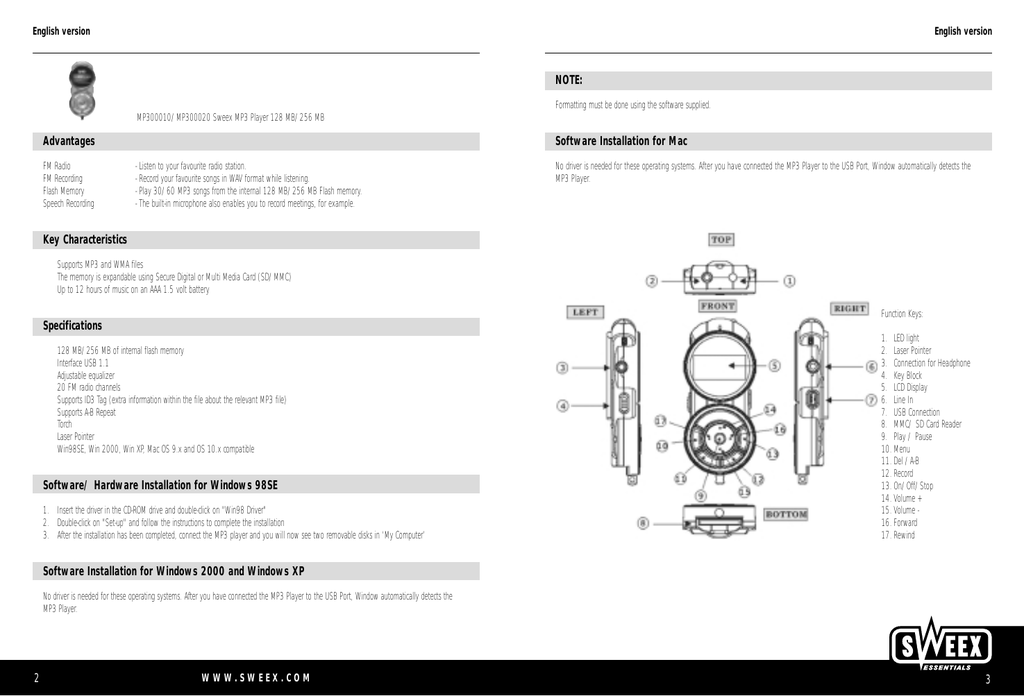

Let’s look at some more complex scripts for Mac OS X.AirPort 2.0.4 software works with all versions of AirPort cards and base This could be very useful for training purposes, or perhaps you’re suspicious that someone has been using your computer while you’re at lunch: Set this up, and you can go back and review what occurred without anyone ever knowing. Over 1.5MB each, sequentially numbered capture1.tiff, capture2.tiff. This will take a screen shot every 60 seconds for 1 hour, creating 60 rather large TIFF files,
Mp3 player for mac os 9 series#
For example, to take a shot of the screen 30 seconds in the future, you could useīut what if you wanted to take a series of screen shots, spaced one minute apart? A simple loop would work: This is an application begging for a wrapper script. W start interaction in window selection mode m only capture the main monitor, undefined if -i is set c force screen capture to go to the clipboard Space key - toggle between mouse selection andĮscape key - cancels interactive screen shot i capture screen interactively, by selection or windowĬontrol key - causes screen shot to go to clipboard Screencapture: illegal usage, file required if not going to clipboard Type in the command without any arguments, and you’ll see the basics of its operation: However, did you know that there’s a command-line alternative too? There’s no man page for it, but screencapture can take shots of the current screen and save them to the Clipboard or to a specific named file (in JPEG or TIFF format).
Mp3 player for mac os 9 mac os x#
You can also use the Mac OS X utility Grab located in the Applications/Utilities folder, and there are some excellent third-party choices, including Ambrosia Software’s Snapz Pro X, which I’ve used for the screen shots in this book. If you’ve used the Mac for any length of time, you’ve already learned that it has a built-in screen capture capability that you access by pressing CMD-SHIFT−3. One last little snippet before we get into the specific scripts for this chapter: easy screen shots in the world of Mac OS X. Once this is applied to the sample file, things start to make a lot more sense: It does.^M $Ĭlearly there’s something wrong! Fortunately, it’s easy to fix with tr: The rain in Spain^Mfalls mainly on^Mthe plain.^MNo kidding. To see that there’s content, use the -v flag to cat, which makes all otherwise hidden control characters visible. Have a file that’s suffering from this problem? Here’s what you’d see if you tried to cat it: Instead of a file in which each line is displayed one after the other, a Mac Aqua file will show up in the Terminal without the proper line breaks. In technical parlance, Aqua systems have end-of-line carriage returns (notationally, an \r character), while the Unix side wants newlines (an \n ). For example, if you work on the command line with files created for the GUI side of the Macintosh, you’ll quickly find that the end-of-line character in these files isn’t the same as the character you need when working on the command line.

There are other Mac OS X tweaks that can help you in your day-to-day interaction. But open could be more flexible than it is, so a wrapper helps a lot. Similarly, Mac OS X has an interesting command-line application called open, which allows you to launch graphical (“Aqua” in Mac OS X parlance) applications from the command line. Spend enough time with iTunes, though, and you’ll find that it’s very hard to keep track of what songs are on your system. One tremendously popular Mac OS X application that many people adore is iTunes, an elegant and powerful MP3 player and online radio tuner application. This means that if you want to add a user to the system, for example, you have to inject his or her information into the NetInfo database, not append it to the /etc/passwd file.Īdditional changes are more on the fun and interesting side, fortunately. There are some significant differences between Mac OS X and Linux/Unix, however, not the least of which is that Mac OS X uses a system database called NetInfo as a replacement for a number of flat information files, notably /etc/passwd and /etc/aliases. Everything you’d want, from development tools to standard Unix utilities, is included with the latest generation of Macintosh computers, with a gorgeous GUI quite capable of hiding all that power for people who aren’t ready for it. Darwin is an open source Unix based on BSD Unix, and if you know your Unix at all, the first time you open the Terminal application in Mac OS X you’ll doubtless gasp and swoon with delight. Jumping from the older Mac OS 9, Mac OS X is built atop a solid and reliable Unix core called Darwin. One of the most important changes in the world of Unix and Unix-like operating systems was the release of the completely rewritten Apple Mac OS X system.


 0 kommentar(er)
0 kommentar(er)
